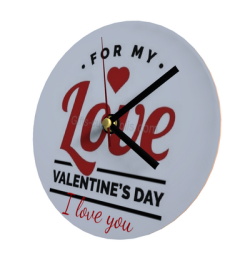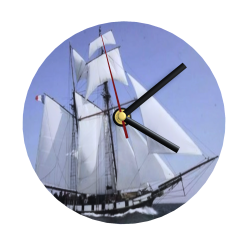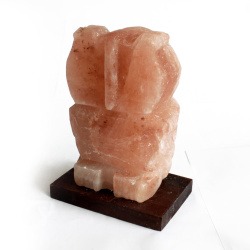Clock with Valentine's Day...
1271: An imminent invention In 1941 Lynn Thorndike published a text of great importance for the history of mechanical clocks. This text - probably the earliest record of clocks, dated 13 April 1271 - concerns a commentary by Robert the Englishman, known as Robertus Anglicus, on The Sphere of Sacrobosco, which states in brief: That a wheel which can turn uniformly over twenty-four hours (to give the equinoctial hours) has not yet been perfected;but that the researches of the clockmakers were going in that direction. Robertus then proposed a wheel driven by a weight (without mentioning the problem of accelerating the movement of this system). This means that the mechanical clock was still in the research stage at that time. In simple terms, the year 1270 can be considered as the "earliest" date of this invention, which in scientific terms is called "terminus ante quem non". "The switch to mechanical time did not translate into language", it did not lead to a change in terminology: the term horologium was simply retained, as for water clocks. While the increasingly frequent references to "horologia" in parish registers suggest that a new technology was emerging at the time, the difficulty of interpretation is still at the forefront: are they hydraulic or mechanical "horologia"? Request a clock as a gift dedicated to the day of the lovers with the possibility of choosing a decoration among a rather large choice of images, constitutes romantic gift ideas, to personalise romantic gifts, Unique Valentine's Day gift ideas in shortvalentine's day gifts for him and her








































